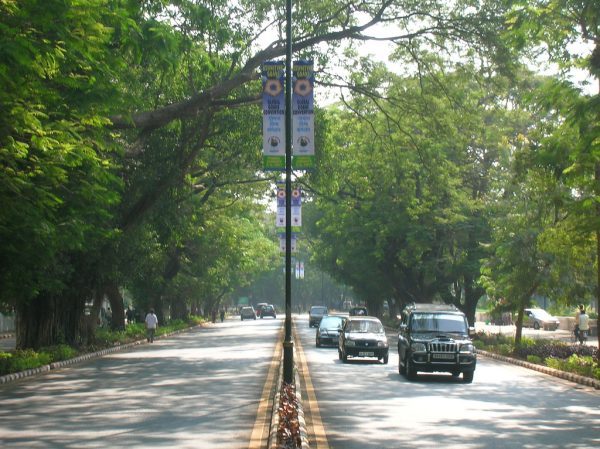Goa is a diverse land. It’s got culture, history, people, land and so much more. It also has an abundance of biodiversity with different kinds of plants and animals in the city and forest areas. All this biodiversity in the plant world has been a combined effort on the part of both the locals as well as the Portuguese when they were in Goa. However, just a few people really know how rich Panjim city is in plant biodiversity.
Plant biodiversity in Panjim city
The Portuguese contributed a lot in the way of plant life in Panjim city. Many do not know this but simple fruits and vegetables we now use on a daily basis, arrived in Goa thanks to the Portuguese. Potatoes, tomatoes, chilies, pineapples and even the beloved cashew nut are here because they saw fit to bring them to Goa.
There is an abundance of plant and tree species in Panjim city. The Botanical Society of Goa has taken it upon themselves to categorize and list all of these. According to a tree study done recently, there are 125 plant and tree species that have been found.
Trees aren’t just pretty to look at but they are super important to the environment. No matter from which side you enter Panjim, whether on foot or by car, there are tree species everywhere. Most of these trees have been standing since the Portuguese days as well.
The Botanical Society of Goa conducted an extensive study to document the biodiversity in the city. The study showed that Panjim has 125 different plant species. Secretary of Botanical Society of Goa, Miguel Braganza says, “each village has to document the tree and plant species and submit it to the Biodiversity Management Committee (BMC) and as of now only 43 out of 189 villages have documented their biodiversity and just a few have submitted it to BMC,” adding that this is one way of preserving the biodiversity around us.
Documenting Panjim’s tree life
The tree study was conducted taking only certain areas of Panjim into consideration. These localities are believed to have the most diverse plant species. They include the four major roads and seven parks in the city. The roads are – Dayanand Bandodkar Road, 18th June Road, Atmaram Borkar Road and Swami Vivekanand Road. The seven parks are Garcia da Orta Municipal garden, Ambedkar Garden, Joggers Park in Altinho-Panaji, Caranzalem Children’s Park, Luis Menezes Braganza Garden, Bhagwan Mahavir Bal Vihar Park and Kala Academy.
A 100 plant species and 23 tree species were identified along 18th June Road. Atmaram Borkar road has 73 plant species and 17 tree species. Tree species identified along all 4 roads were many. They include rain tree, copper pod, Peepal tree, nunurki tree, mango tree, coconut palm, Indian almond, false Ashoka, English tamarind, Indian fig, guava, drumstick, chandada, jackfruit, chikoo, Parijat, Christmas tree, golden bamboo, areca nut palm, Australian pine, breadfruit, and maddi. The copper pod tree, in particular, is found in abundance along 18th June road.
Plant and tree species in the garden and parks
The garden and parks aren’t to be left behind. They too have a magnificent variety of indigenous trees and shrubs. A total of 188 trees were recorded in Garcia de Orta garden of which the most commonly found species was the Nunurki/Benjamina. The coconut tree species featured at the top of the list in the 111 trees found in Caranzalem park. The Jogger’s Park has a total of 458 tree species. The Copper pod, Indian almond, Champa, Bottle palm, Amaltas amongst others are the common ones here. The Luis Menezes Braganca garden among all has many Ervatamia hybrid plant species of the 115 plants that are there. The Bhagwan Mahavir Park and Ambedkar Garden have 660 and 256 tree species respectively. The Australian pine tops the list in both the places.
Panjim has so many trees that we as lay people will not recognize. But one tree that has stood the test of time is the rain tree. These trees don’t have any real value but there are benefits to having them around. “The rain tree became popular in Goa post-1950 after which then spread across the state and today are found almost in every part,” says Braganza.“The tree’s bark is softwood but the inner part is hardwood. Unlike other trees that shed their leaves in summer these trees are a good source of shade and moreover they are known to survive cyclonic conditions,” he adds.
It’s also believed that the temperature under these trees is usually 2 to 3 degrees lower than normal temperature.
In and around Panjim city
Other common trees in the Panjim area are the Copper pod and Gulmohar trees. And there is also one particular kind of tree that is found in just one part of the city. This is Butea Monosperma that is commonly known as the Palash tree. Braganza mentions that the plant is found only along the Dayanand Bandodkar road, opposite Thomas Cook building, Panaji.
The other species found in the city are Indian cork tree, Banyan tree, Java olive, Boram, Scholar tree, Cluster fig, Fish-tail palm, Eucalyptus, Siamese cassia, Neem, Assale, Ixora, Frangipani, Bull’s heart, Subabul, Fiji fan palm, Love apple, Branched palm amongst others.
So look after the trees in Panjim city. We never know when they could be lost forever.
Information credit – The Navhind Times
ItsGoa/APR/KDGP


